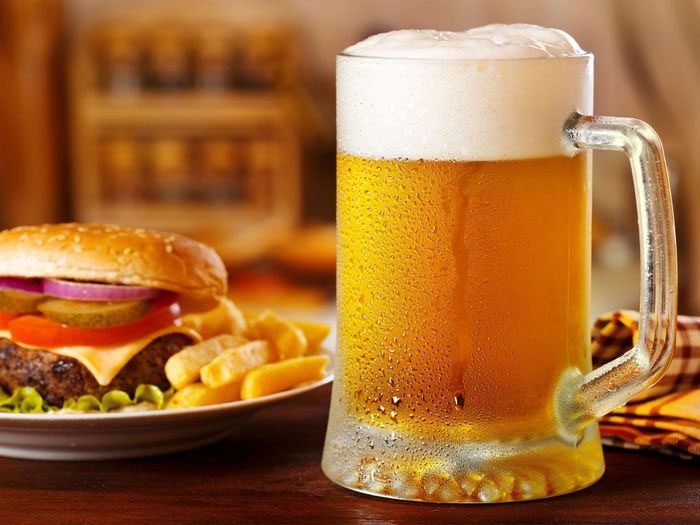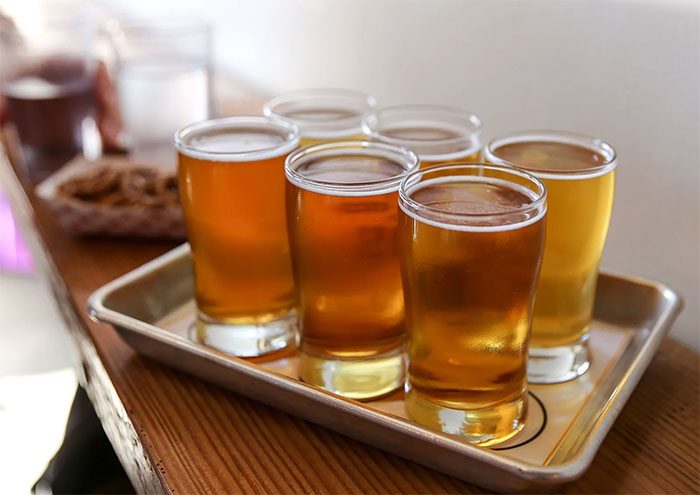Few people know that this “liquid gold” that captivates many was created by a random mistake.
No one knows exactly when the first batch of beer was brewed. We can almost be certain that beer did not exist before 10,000 BC, but by 4000 BC, it had spread to the Near East, where it appeared in a cuneiform text from Mesopotamia, corresponding to present-day Iraq, depicting two individuals using straw to drink beer from a large ceramic vessel. Ancient beer had grains, husks, and various other fragments floating on the surface, necessitating the use of a straw to avoid swallowing them.
The earliest texts date back to around 3400 BC, so they cannot shed direct light on the origin of beer. However, it is clear that the popularity of beer is closely tied to the domestication of various cereal crops for brewing and the learning of agricultural practices.
Beer appeared during a turbulent phase in human history, witnessing the transition from a nomadic lifestyle to a settled one, followed by a sudden increase in social complexity, directly reflected in the emergence of urban centers. Beer is a beverage steeped in prehistoric human tradition, and its roots are intimately connected to the origins of civilization itself.

The popularity of beer is linked to the domestication of cereal crops.
Beer was not invented; it was discovered. This discovery was inevitable as the storage of wild cereals became common after the last Ice Age ended around 10,000 BC, in an area known as the Fertile Crescent. This region stretches from modern-day Egypt, along the Mediterranean coast in southeastern Turkey, and down to the border between Iraq and Iran. It is named for its fortunate geographical conditions.
When the Ice Age ended, the mountains in this area provided an ideal environment for wild sheep, goats, buffalo, cattle, and pigs; as well as suitable conditions for growing wild wheat and barley in proximity. This meant that the Fertile Crescent often offered attractive options for nomadic groups focused on hunting and gathering. They not only hunted animals and foraged for edible plants but also collected the abundant wild grains in the region.
These types of grains provided a reliable and interesting food source. While they were not edible when raw, these grains could be consumed when crushed or ground and then soaked in water. Initially, they were likely mixed into soups.
Diverse ingredients such as fish, nuts, and berries were mixed with water in a gypsum or bitumen-lined container. Heated stones were added with a stick. The grains contained tiny starch granules that, when soaked in water, absorbed moisture and expanded, causing the starch to blend into the soup and thicken it.
It was soon discovered that grains had an unusual property: unlike other foods, if stored safely and dry, they could be preserved for consumption over months or even years. When no other food was available for soups, they could be used alone to make thick or thin porridge. This discovery led to the development of tools and techniques for harvesting, processing, and storing grains.
This labor-intensive task served as a safeguard against future food shortages. Throughout the Fertile Crescent, archaeological evidence from around 10,000 BC includes flint sickles for harvesting grains, woven baskets for storage, stone ovens for drying, pits for storage, and grinding stones for processing.
Although hunter-gatherers had partially settled rather than being completely nomadic—moving and lodging temporarily or seasonally—the ability to store grains began to encourage people to stay in one place.
An experiment conducted in the 1960s revealed the reason. An archaeologist used a flint sickle to assess the efficiency with which prehistoric families could harvest wild grains, which still grow in some regions of Turkey.
In one hour, he harvested nearly one kilogram of grains, leading to the conclusion that a family working eight hours a day for three weeks could gather enough to supply each family member with half a kilogram of grains per day for a year. However, this meant they had to be close to the wild grain bushes to not miss the optimal harvesting moment. Once they collected a large amount of grain, they could not simply leave it unattended.

Ancient beer had grains, husks, and various other fragments floating on the surface, very different from today.
This resulted in the establishment of the first permanent settlements, such as those along the eastern Mediterranean coast around 10,000 BC. Here, simple round huts with wooden supports and floors sinking nearly a meter were built. These huts often featured stone hearths approximately 3.6 to 4.6 meters in diameter. A typical village contained about 50 huts, providing shelter for a community of two to three hundred people. Although the residents in these villages continued to hunt wild animals like gazelles, deer, and wild boars, skeletal remains provide evidence that they survived on a diet of plant foods such as acorns, lentils, chickpeas, and grains, which were still foraged rather than actively cultivated at this time.
Initially, grains were not considered a significant food source, but they became more valuable when two other unusual characteristics were discovered. The first is that these grains absorb water, allowing them to sprout and become sweet. It is difficult to create a completely waterproof storage pit, so this characteristic became apparent when humans began to store grains.
The reason these grains have a sweet taste today has been explained: moist grains produce diastase enzymes, which help convert starch into maltose or malt sugar. This process occurs in all types of grains, but barley produces the most diastase enzymes and therefore the most maltose.
In times when there were few sugar sources, the sweetness of “malted grains” must have been highly valued, leading to the development of active malting techniques, where grains are moistened and then dried.
The second discovery was even more significant. Plain porridge left unattended for several days undergoes a mysterious transformation, appearing as if cooked with malted grains: it bubbles slightly and has a mild fermentation, as wild yeast in the air ferments the sugars in the porridge into alcohol.
In short, plain porridge transformed into beer. Even so, beer was not necessarily the first alcoholic beverage to pass through human lips.
At the time beer was discovered, alcohol from accidentally fermented fruit juices (producing wine) or water and honey (producing mead) had already occurred in small amounts in nature as people tried to store fruits or honey. However, fruits are seasonal and spoil easily, wild honey is limited in supply, and wine or mead does not store well without ceramic vessels, which only became common around 7000 BC.
On the other hand, beer can be made from seasonal grains, which are plentiful and easily stored, providing satisfaction in both quality and quantity when needed. Long before the advent of ceramics, beer could be brewed in baskets made of tar, leather, or animal stomachs, reed stalks, large shells, or stone vessels. Shells were used for boiling water until the 19th century in the Amazon basin, and Sahti, a traditional beer in Finland, is still brewed in hollowed-out tree trunks to this day.
Once the significant process of making beer was established, trial and error further improved its quality. For instance, the more malted grains used in the initial porridge, the longer the fermentation time, resulting in stronger beer.
More malt means more sugar, and longer fermentation means more sugar will turn into alcohol. Cooking the plain porridge also helps make the beer stronger.

For thousands of years, humans have discovered ways to create beers with diverse alcohol content and flavors.
The malting process converts about 15% of the starch in barley grains into sugar, but when malted barley is mixed with water and heated, other starch-converting enzymes, which work best at high temperatures, will convert even more starch into sugar, providing the yeast with additional sugar to turn into alcohol.
Ancient brewers also noticed that using the same container for brewing multiple times produced more reliable results. Later historical records in Egypt and Mesopotamia show that brewers often carried “mixing vessels” with them, and a Mesopotamian legend even mentions “vessels that produce good beer.”
Reusing the same mixing vessel would promote successful fermentation because the process of cultivating yeast would occur in the cracks of the container, eliminating dependence on erratic wild yeast sources.
Finally, add various types of berries, honey, flavors, herbs, and other tastes to plain porridge to create different forms of beer. In the following thousands of years, humanity discovered ways to produce beers with diverse alcohol content and flavors, catering to various occasions.




















































